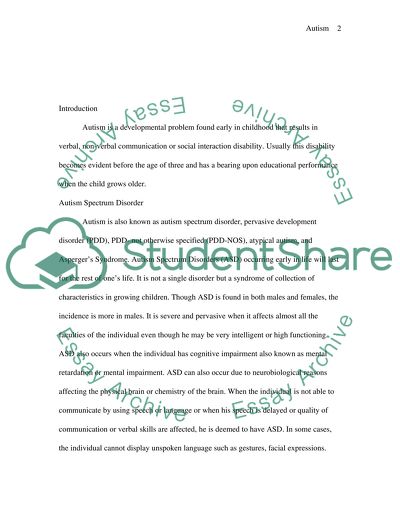Cite this document
(Autism and Autism Spectrum Disorder Assignment Example | Topics and Well Written Essays - 2750 words, n.d.)
Autism and Autism Spectrum Disorder Assignment Example | Topics and Well Written Essays - 2750 words. Retrieved from https://studentshare.org/health-sciences-medicine/1550753-autism-and-autism-spectrum-disorder-and-different-teaching-methods-in-the-classroom
Autism and Autism Spectrum Disorder Assignment Example | Topics and Well Written Essays - 2750 words. Retrieved from https://studentshare.org/health-sciences-medicine/1550753-autism-and-autism-spectrum-disorder-and-different-teaching-methods-in-the-classroom
(Autism and Autism Spectrum Disorder Assignment Example | Topics and Well Written Essays - 2750 Words)
Autism and Autism Spectrum Disorder Assignment Example | Topics and Well Written Essays - 2750 Words. https://studentshare.org/health-sciences-medicine/1550753-autism-and-autism-spectrum-disorder-and-different-teaching-methods-in-the-classroom.
Autism and Autism Spectrum Disorder Assignment Example | Topics and Well Written Essays - 2750 Words. https://studentshare.org/health-sciences-medicine/1550753-autism-and-autism-spectrum-disorder-and-different-teaching-methods-in-the-classroom.
“Autism and Autism Spectrum Disorder Assignment Example | Topics and Well Written Essays - 2750 Words”, n.d. https://studentshare.org/health-sciences-medicine/1550753-autism-and-autism-spectrum-disorder-and-different-teaching-methods-in-the-classroom.


